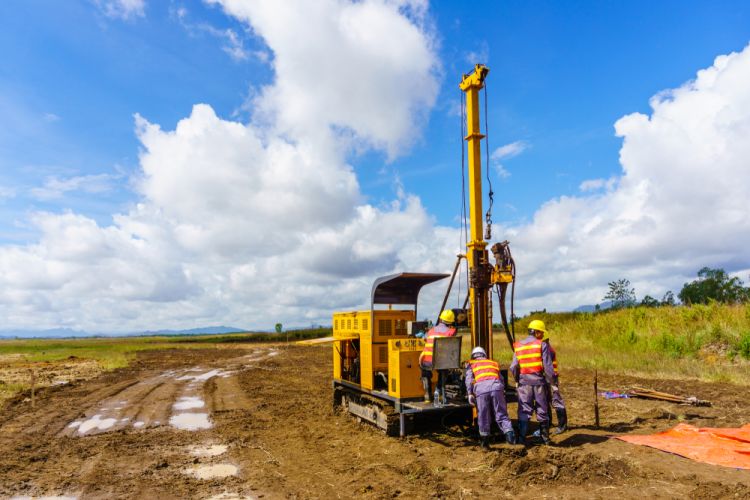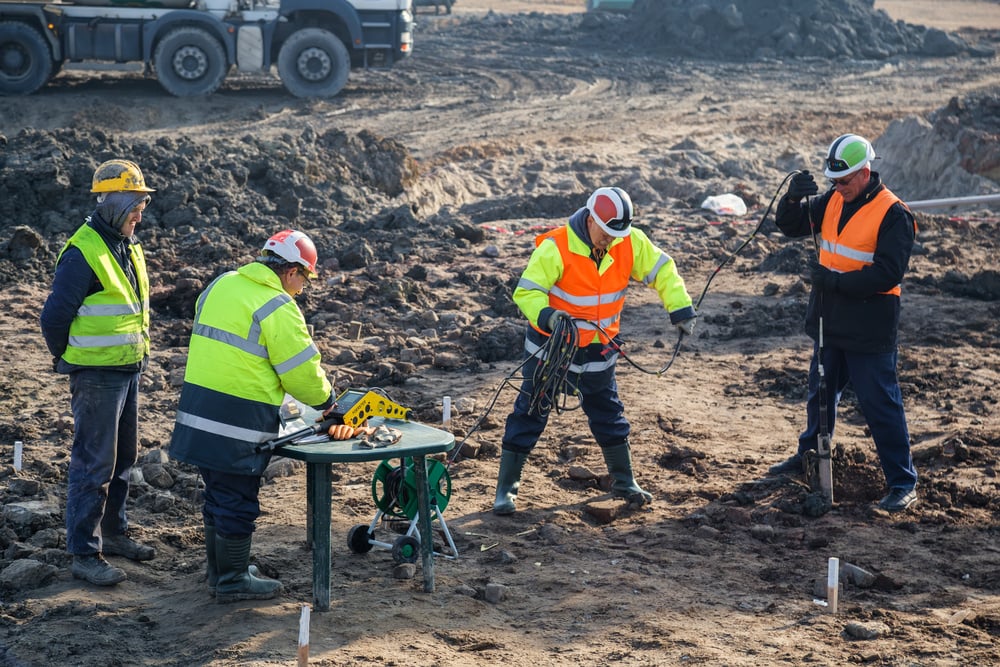Indicators on Geotechnical Engineering For Construction Projects You Should Know
Indicators on Geotechnical Engineering For Construction Projects You Should Know
Blog Article
How Geotechnical Engineering For Construction Projects can Save You Time, Stress, and Money.
Table of ContentsThings about Geotechnical Engineering For Construction ProjectsLittle Known Facts About Geotechnical Engineering For Construction Projects.Geotechnical Engineering For Construction Projects for BeginnersThe Ultimate Guide To Geotechnical Engineering For Construction ProjectsFascination About Geotechnical Engineering For Construction ProjectsThe Facts About Geotechnical Engineering For Construction Projects Uncovered
The function of geotechnical engineering considerably handles recognizing the features of soil and rock, which might differ substantially by their thickness, moisture web content etc. These attributes need to be examined by geotechnical engineers to forecast their movements under numerous situations. The safety as well as security of structures are influenced by dirt conditions, making this evaluation required.A geotechnical designer will analyze dirt to identify the bearing capacity of the earth and recommend appropriate structure types, such as superficial foundations, deep structures like stacks, or specialized solutions like floating structures for soft soils. Recognizing the functions and activities of soil and rock, in enhancement to how they engage with constructions that have actually been erected on or within them, is just one of the primary explanations for why geotechnical engineering is necessary.
In enhancement to architectural planning and building and construction, geotechnical design is likewise essential to the reconstruction and maintenance of pre-existing frameworks. Age-related degradation or extra issues might affect a structure's stability and effectiveness. Environmental management is completed through geotechnical design. Competence in air, water, and dirt top quality upkeep is put to make use of by geotechnical designers to minimize the negative impacts of jobs.
To sum up, geotechnical design is a vital discipline that preserves the resilience and honesty of civil framework. Geotechnical engineers contribute to making building jobs effective all over the globe by recognizing the behavior of earth products and applying appropriate preparation methods.
Some Ideas on Geotechnical Engineering For Construction Projects You Should Know
By checking out soil, rock, and subsurface conditions, geotechnical designers provide necessary understandings that aid in the design, building, and maintenance of buildings and facilities.

All about Geotechnical Engineering For Construction Projects
Research laboratory testing: Identifying the properties of dirt and rock. Numerous prominent building and construction jobs have efficiently used geotechnical engineering this website to guarantee their stability and security.

As a leader in geotechnical engineering, BECC Inc. is dedicated to supplying cutting-edge and efficient solutions that fulfill the highest possible requirements of high quality and safety. To find out more on how BECC Inc. can sustain your following construction task, contact us today and allow us assist you build on strong ground.
William Rankine, a designer and physicist, established an alternate to Coulomb's planet stress theory. Albert Atterberg developed the clay consistency indices that are still used today for dirt classification. In 1885, Osborne Reynolds recognized that shearing reasons volumetric dilation of thick products and contraction of loosened granular materials. Modern geotechnical design is stated to have started in 1925 with the publication of Erdbaumechanik by Karl von Terzaghi, a mechanical engineer and rock hound.
4 Simple Techniques For Geotechnical Engineering For Construction Projects
Terzaghi likewise developed the framework for concepts of bearing capability of structures, and the concept for forecast of the price of negotiation of clay layers due to consolidation. Afterwards, Maurice Biot fully developed the three-dimensional soil combination theory, prolonging the one-dimensional model previously developed by Terzaghi to much more basic hypotheses and introducing the set of basic formulas of Poroelasticity.
Geotechnical designers examine and determine the homes of subsurface conditions and products.
The Buzz on Geotechnical Engineering For Construction Projects
Still, they are occasionally utilized to enable a geologist or designer to be lowered into the borehole for straight aesthetic and hand-operated exam of the dirt and rock stratigraphy. Various soil samplers exist to fulfill the demands of various design tasks. The common infiltration examination, which Full Article makes use of a thick-walled split spoon sampler, is the most typical method to gather disturbed samples.

Generally, the user interface's precise geometry is unknown, and a streamlined interface geometry is thought. Finite inclines need three-dimensional versions to check my reference be examined, so most inclines are examined assuming that they are definitely broad and can be stood for by two-dimensional designs.
The Basic Principles Of Geotechnical Engineering For Construction Projects
Developing the layout based on a working hypothesis of behavior anticipated under the most probable problems. Option of amounts to be observed as building and construction profits and calculating their anticipated values based on the working theory under the most undesirable problems.
Measurement of quantities and assessment of real conditions. Style modification per real conditions The empirical technique appropriates for building that has currently started when an unanticipated growth happens or when a failure or crash looms or has actually already occurred. It disagrees for tasks whose layout can not be modified throughout building.
Report this page